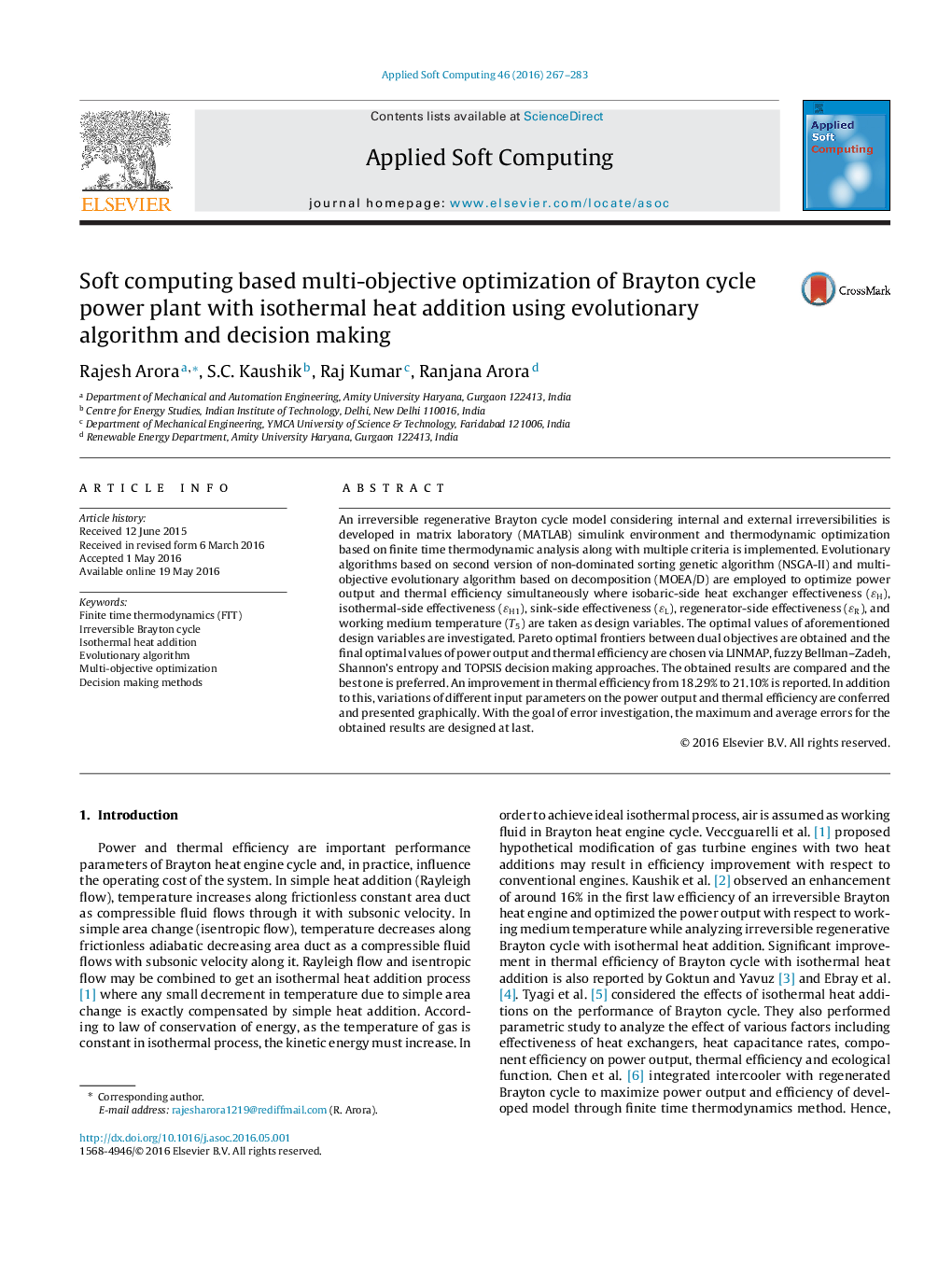| کد مقاله | کد نشریه | سال انتشار | مقاله انگلیسی | نسخه تمام متن |
|---|---|---|---|---|
| 494670 | 862802 | 2016 | 17 صفحه PDF | دانلود رایگان |

• Two performance parameters are optimized through NSGA-II and MOEA/D.
• Optimal values of various input parameters are obtained.
• Significant improvement (about 15%) in thermal efficiency is reported.
• Suitability of heat exchanger for a particular application can be found.
• Effects of various input parameters on dual objectives are reported.
An irreversible regenerative Brayton cycle model considering internal and external irreversibilities is developed in matrix laboratory (MATLAB) simulink environment and thermodynamic optimization based on finite time thermodynamic analysis along with multiple criteria is implemented. Evolutionary algorithms based on second version of non-dominated sorting genetic algorithm (NSGA-II) and multi-objective evolutionary algorithm based on decomposition (MOEA/D) are employed to optimize power output and thermal efficiency simultaneously where isobaric-side heat exchanger effectiveness (εH), isothermal-side effectiveness (εH1), sink-side effectiveness (εL), regenerator-side effectiveness (εR), and working medium temperature (T5) are taken as design variables. The optimal values of aforementioned design variables are investigated. Pareto optimal frontiers between dual objectives are obtained and the final optimal values of power output and thermal efficiency are chosen via LINMAP, fuzzy Bellman–Zadeh, Shannon’s entropy and TOPSIS decision making approaches. The obtained results are compared and the best one is preferred. An improvement in thermal efficiency from 18.29% to 21.10% is reported. In addition to this, variations of different input parameters on the power output and thermal efficiency are conferred and presented graphically. With the goal of error investigation, the maximum and average errors for the obtained results are designed at last.
Figure optionsDownload as PowerPoint slide
Journal: Applied Soft Computing - Volume 46, September 2016, Pages 267–283